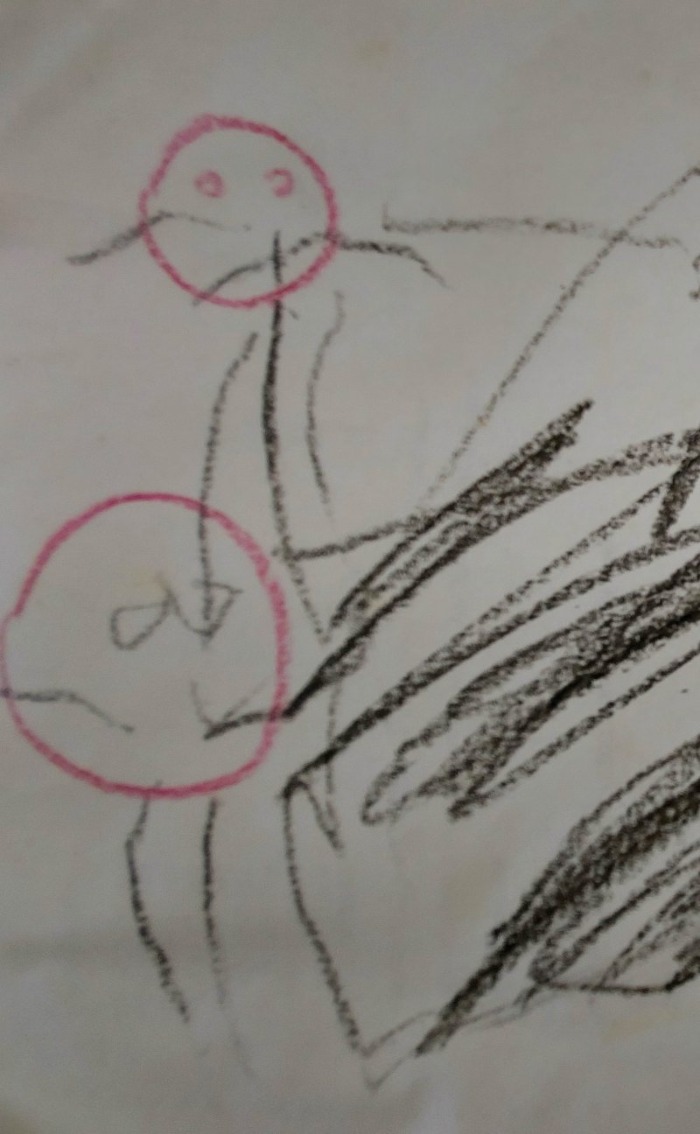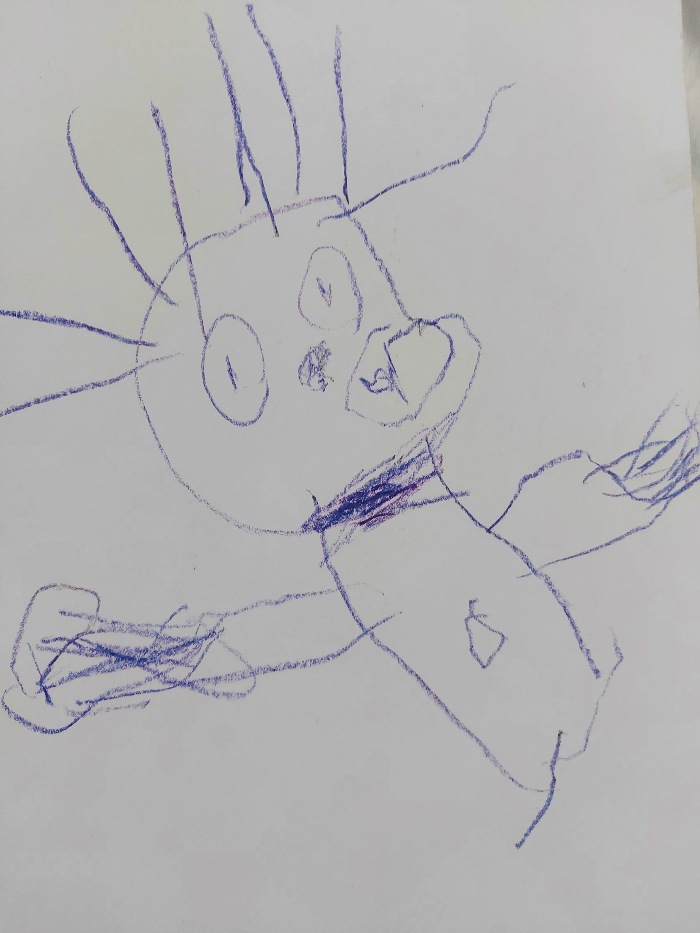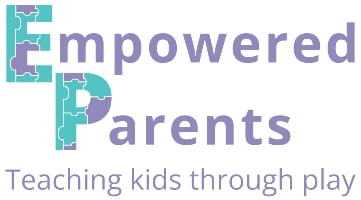Drawing a person is an important milestone and indicator of child development.
As with other developmental benchmarks, children do not necessarily master skills at the exact same ages.
However, research shows similarities in how children draw people at different stages of their formative years.
The Developmental Stages of Drawing a Person
Various names and terms are used to describe the progressive stages of children’s drawing.
These stages can be categorised by typical age, drawing characteristics, or artistic development. However, they are general guidelines and often overlap.
You might notice that your child’s drawings of people include features from several of the categories below, and that is perfectly normal. Each child’s development is unique.
Let’s take a look at the typical stages.
1. Scribbles
From the age of one to two years old, the first scribbles appear as little ones hold a crayon in their fists.

This leads to more controlled scribbles, which may sometimes resemble a person.
This is usually accidental and often surprising, but intentionally drawing a person usually happens at around age three.

2. Tadpole or Amoeba Forms
Around age three or four, children start drawing people who resemble tadpoles or amoebas.

These drawings typically feature a circular head with legs extending directly from it. Sometimes, children also add arms or eyes.

These shapes typically float in space, with no type of baseline for the ground.

3. Basic Forms with Added Features
Around age four, kids add arms with fingers at the ends, more elaborate faces, and sometimes the trunks of bodies.

During this pre-symbolic stage, heads are typically much larger than other body parts. Many of the central things that kids experience are related to the head: eating, drinking, hearing, smelling, seeing, talking, crying and laughing.

They often depict smiles on the faces they draw.

4. Human Forms
By age five, children usually add more details to their drawings of people, such as hair, hands with fingers, body trunks, and feet with toes.

At this stage, children often create self-portraits to explore their self-image. Around this age, children start paying more attention to the colours they use in their drawings, as well.

5. Groups and Families in Action
Between the ages of six and seven, kids often start to draw groups of people, such as families. The bodies usually look similar but may have differences in hair and clothing to indicate gender.
During the schematic stage, children start adding more detail to limbs, moving beyond simple stick figures. They draw the people in action, showing them using their limbs to accomplish work and play.

[source]
What does a Child’s Drawing Tell Us about Development?
A child’s drawing reflects the development of their fine motor skills and eye-hand coordination.
Their drawings mature as they refine their pencil grasp and learn to control pencils, crayons, markers, and paintbrushes.
Inborn artistic talent can also be detected, along with a child’s prior experiences with art.
Drawings also tell us about cognitive development, such as whether children have gained an understanding of using symbols for people and objects that surround them.
Children can only draw what they know or have experienced.
Their pictures also reflect body awareness, such as what the various parts of the body can accomplish and how they bend and move.
Drawings can even show if children feel uncomfortable with something about their own bodies. Art therapists analyse children’s drawings of people and their surroundings to assess emotional development.
P.S. For quick, play-based activities that build these skills, see the Learning Through Play Activity Pack.
Should You Teach Children to Draw People?
Drawing is a natural developmental process that does not need formal instruction. However, children need opportunities to draw frequently in order to reap the many benefits of drawing.
Children do not learn to draw people by being shown how by an adult. Instead, their drawings develop as their cognitive understanding and body awareness increase.
Activities such as colouring books, therefore, do little to stimulate creativity and aren’t necessary for “teaching” a child to draw.
Teaching the mechanics of drawing people is not suggested because children draw them when they are developmentally ready.
However, there are things you can do to help ensure your child has all the rich background experiences needed to ensure success when the time is right.
20 Activity Ideas to Help Prepare Kids to Draw People
While formal art lessons are unnecessary, you can provide various life experiences to support your child’s natural drawing development, such as:
- Read and discuss picture books that portray illustrations of people.
- Offer many opportunities for painting and drawing with no set product outcomes.
- Rotate art materials to keep interest high.
- Draw and paint alongside your child.
- Model how to tell a story with illustrations.
- Visit art museums.
- Encourage using and talking about all the senses.
- Talk about everyday life with your child.
- Go on outings, small and large; visit local landmarks.
- Encourage unstructured, free play.
- Teach your child to ride a bike.
- Plant a garden together.
- Cook or make snacks together.
- Plan a nature scavenger hunt.
- Offer open-ended materials for your child to build projects.
- Encourage time with family and friends…young, old and in-between.
- Go bird watching.
- Introduce children to new vocabulary.
- Visit the library.
- Celebrate holidays.
20 Activity Ideas to Help Develop Positive Body Awareness in Children
To draw people successfully, children need awareness of different body parts and their functions.
For children to enjoy drawing people, having a positive view of bodies—both in general and their own—is beneficial. The activities below support this perspective.
- Sing songs about the body (“Head, Shoulders, Knees, and Toes,” for example).
- Point to and name body parts.
- Play games such as “Simon Says”.
- Imitate animal movements.
- Introduce your child to yoga.
- Encourage daily physical activity.
- Offer healthy eating choices.
- Accentuate the positive and avoid talking about body weight as a negative.
- Encourage shadow mimic play.
- Play dress-up.
- Make people with play dough.
- Move and dance to music.
- Play hand-clapping games.
- Share mirroring/copying movement games.
- Play flashlight game (shine on body parts and name them).
- Make paper/cardboard dolls.
- Play with dolls.
- Make foot/handprints in wet sand.
- Play with figurines of people.
- Sort laundry clothing by size; match socks.
- Try these body parts activities.
Drawing a person is a significant milestone in child development.
From infancy, children observe the world around them, eventually translating their experiences onto paper through drawing.
You likely have wonderful examples of this artistic journey to frame and cherish for years to come!

